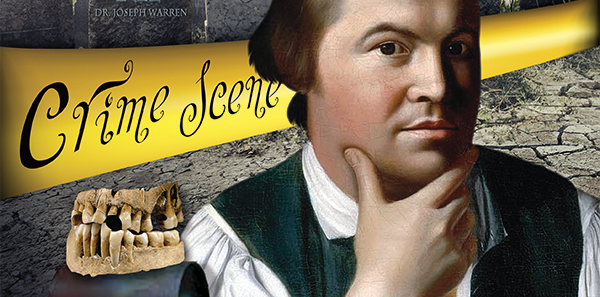
ACEP welcomes its emergency physicians to Boston, the cradle of America’s freedom! As physicians descend upon Boston, it is surprising to know that many physicians were instrumental in America’s fight for freedom.
Explore This Issue
ACEP Now: Vol 34 – No 10 – October 2015Boston is so full of history that you should make a special effort to spend more time in this city and explore its history. You may be thinking, “History? Boring! I learned it in high school.”
Well, for your information, the history we were taught in high school is wrong. Explore the truth in Boston, and you will be surprised what you find.
Here is a little sample of what you may not have known.
Joseph Warren, a prominent physician in Boston, was actually the one who convinced Paul Revere to do his famous midnight ride, but did you know Revere never finished his ride to Concord? He was captured trying to get there. Samuel Prescott, another physician, rode along with Revere; he finished the ride, not Revere. There was a third rider, but I will leave that for you to investigate. Dr. Prescott just happened to run into the two riders. He was out on a date that night.
Did you know the only reason we know about Revere and his ride is due to a poet by the name of Henry Wadsworth Longfellow who wrote a poem about it on the eve of the Civil War in order to help keep the country together?
Dr. Warren continued to contribute to medicine after his death. For those interested in forensics, Dr. Warren was killed during the Battle of Bunker Hill, but exactly how he died has been controversial.
Also, did you know Revere’s father was originally from France and that his real name was Apollos Rivoire, which was later changed to Paul Revere? Thus, the famous rider was a junior. His father was also a silversmith, just like his son. However, it’s a little known fact that Paul Jr. also practiced dentistry. He made teeth and dental bridges. As a matter of fact, and an important one, Dr. Warren was one of Revere’s patients.
Dr. Warren continued to contribute to medicine after his death. For those interested in forensics, Dr. Warren was killed during the Battle of Bunker Hill, but exactly how he died has been controversial.
The British buried Dr. Warren, along with other patriots, in a mass grave. Dr. Warren wanted to be buried in the family cemetery, but how do you identify a body two years after death? In addition, it has been reported that Dr. Warren’s body was mutilated by the British by order of a particular officer, a piece of history beyond the scope of this article.
This was the birth of modern-day forensics. Dr. Warren was identified by his dental work. Who did that dental work? None other than Paul Revere, a close friend.
The story doesn’t end there. Now, back to the controversy of how Dr. Warren died. His skull was later photographed when the body was moved again. The photo showed a small entry wound under the left eye and an exit would on the right side of the skull. British soldiers used large caliber bullets, while officers used handguns, not rifles. The rifles used by the patriots were of a smaller caliber than those of the typical British soldier. Evidence shows he was shot at close range. So who shot him? Was it friendly fire or perhaps a British officer with a reason to kill him at close range?
Forensics is all about a deep dive into the facts and applied science to light the darkness.
While in Boston, don’t miss the opportunity to explore the history of medicine in this wonderful city.
Dr. Fitz is clinical faculty at Texas Tech University Health Sciences Center in Lubbock.
Pages: 1 2 | Multi-Page




No Responses to “Forensic Mysteries of Physicians’ Roles in Boston’s History”